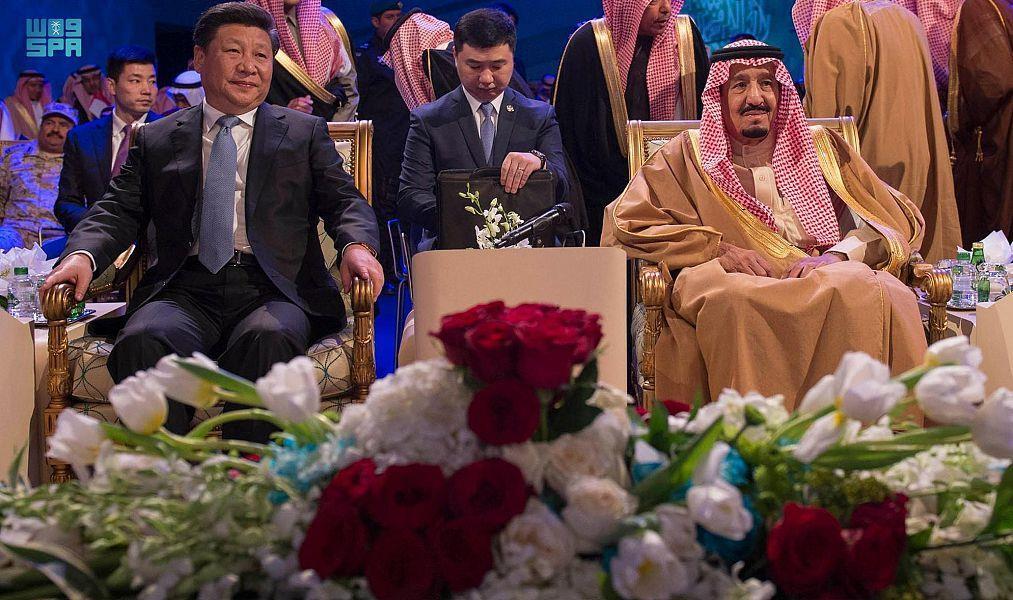
- ARAB NEWS
- 18 Apr 2024

Energy is the foundation of human civilization. Facing a looming climate crisis, all countries in the world share in the responsibility to accelerate the transition to green energy.
This year, geopolitical conflicts and extreme weather conditions have disrupted the global energy supply, further calling attention to the importance of energy security and the energy transition.
Sharing the same strategic goal of sustainable and green development, Saudi Arabia and China exemplify how countries have accelerated action to confront the global climate challenge.
A pioneer in the energy transition, Saudi Arabia formulated its strategic road map in Vision 2030 and aims to increase renewable energy to 50 percent of total energy production capacity by 2030 and achieve net-zero emissions by 2060.
To achieve this ambitious vision, Saudi Arabia is leveraging its strengths in traditional energy and pushing forward renewable energy development and economic diversification, introducing measures such as actively adopting solar and wind power, developing carbon capture, utilization and storage, promoting energy-efficient building renovations, and electrifying transportation.
Tangible progress can be observed through key energy transition indicators. According to the International Energy Agency, the share of oil in Saudi Arabia’s total power generation decreased from 63 percent in 2015 to 42 percent in 2018, while that of natural gas increased significantly to more than 58 percent in 2018.
While renewable energy is still not the dominant source of power generation in Saudi Arabia, according to S&P Global this will change over the next few years as projects with a total capacity of 7.1 gigawatts are currently under construction.
Work on the green hydrogen and ammonia mega plant at NEOM is also ongoing, supporting Saudi ambitions to produce 3 million tons per year of clean hydrogen by 2030.
On the other side of Asia, China is also determinedly advancing toward its “30-60” agenda, which targets reaching peak carbon dioxide emissions by 2030 and carbon neutrality by 2060.
Even before unveiling these targets in 2020, China had already begun to rapidly transform its industrial structure from relying on fossil fuels to using more green energy.
According to the National Energy Administration of China, the country’s total installed capacity for renewable energy reached 1,063 GW in 2021. Renewables accounted for 44.8 percent of China’s total installed power generation capacity last year, up 11 percentage points from 2015.
Globally, China is leading the way in renewable energy technologies and is playing an increasingly essential role in the global energy transition by lending expertise and helping build energy infrastructure for countries connected to the Belt and Road Initiative.
Since establishing diplomatic relations in 1990, China and Saudi Arabia have cooperated closely in the oil and gas trade. More recently, China-Saudi Arabia cooperation has quickly expanded into renewable energy, smart cities, artificial intelligence, aerospace and other fields under the Belt and Road Initiative.
Bilateral cooperation has quickly expanded into renewable energy, smart cities, artificial intelligence, aerospace and other fields.
Data from the American Enterprise Institute’s China Global Investment Tracker shows that Beijing has become an important partner in Saudi Arabia’s economic diversification and structural reforms, with cumulative Chinese investment in Saudi Arabia since 2013 topping $30 billion.
Looking forward, China and Saudi Arabia share a great vision for bilateral cooperation, particularly in expanding green energy industries and strengthening traditional energy industries.
Chinese leaders have reiterated the country’s willingness to strengthen and deepen collaboration with the Kingdom in environmental protection, energy conservation, emissions reduction, green infrastructure and green finance under the Belt and Road Initiative framework. The complementarity between Chinese and Saudi industries will likely induce greater synergies.
As we gradually transition to green energy sources, China and Saudi Arabia will also benefit from closer cooperation in ensuring stability and security in traditional energy.
By strengthening cooperation in both traditional and renewable energy, China and Saudi Arabia will together play a significant role in accelerating the global green transition and stabilizing international energy markets.
Finally, to turn the shared vision of creating a cleaner, more diverse and more sustainable energy landscape into reality, it is crucial that China and Saudi Arabia mobilize more companies, funds and entrepreneurs to communicate ideas, pool resources and share technical expertise.
As one of the largest and most internationalized investment banks in China, CICC has long served as a bridge connecting clients both within China and abroad.
We are willing and able to promote greater bilateral capital flows and stronger industrial linkages between China and Saudi Arabia and look forward to working with multiple parties in Saudi Arabia to contribute to the energy transition and to sustainable economic development in the region and around the world.